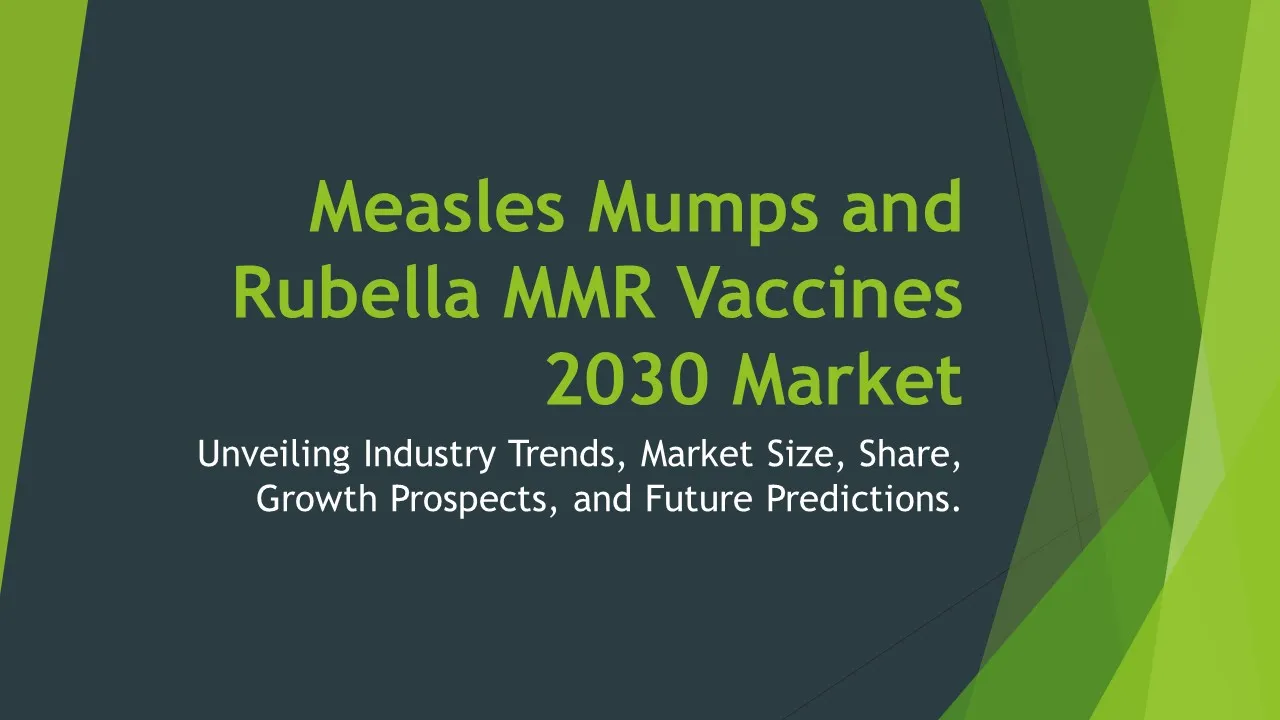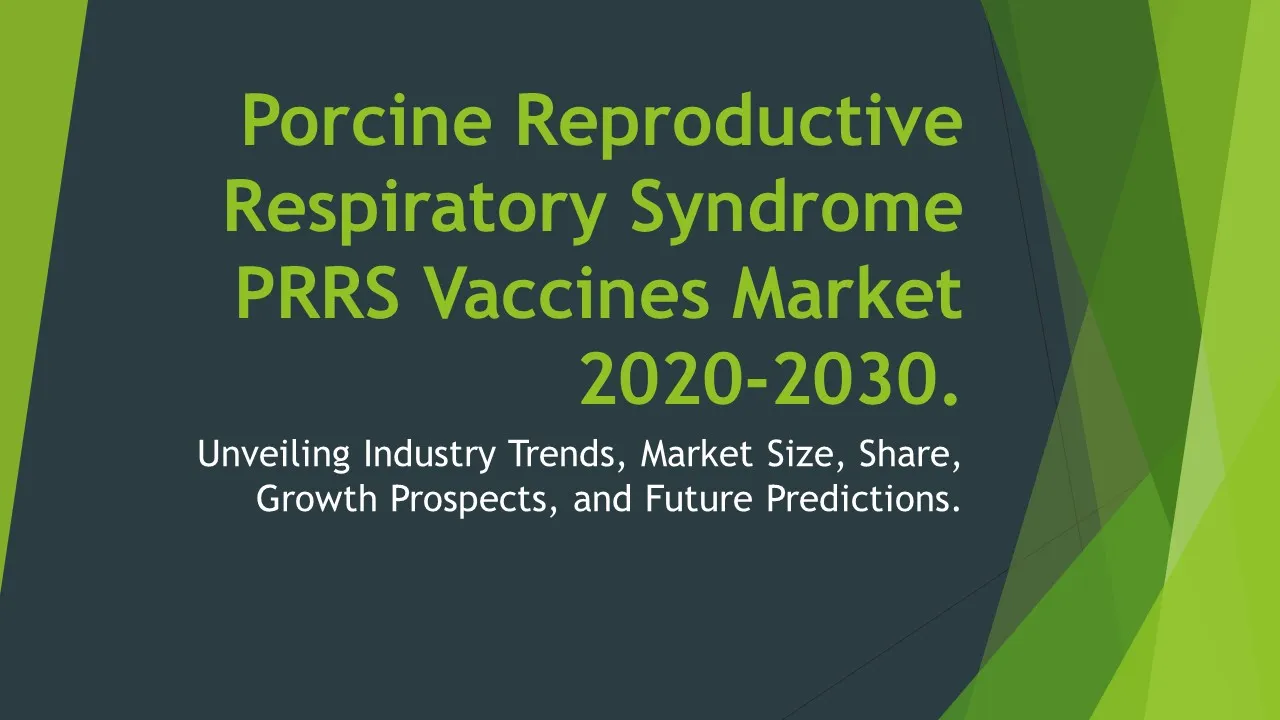Sterile Active Pharmaceutical Ingredients
Sterile Active Pharmaceutical Ingredients Market Segments - by Product Type (Antibiotics, Antivirals, Antifungals, Antineoplastics, Anticoagulants), Application (Injectables, Ophthalmic, Inhalants, Topical, Oral), Distribution Channel (Hospitals, Clinics, Online Pharmacies, Retail Pharmacies, Drug Stores), Ingredient Type (Monoclonal Antibodies, Recombinant Proteins, Vaccines, Hormones, Immunoglobulins), and Region (North America, Europe, Asia Pacific, Latin America, Middle East & Africa) - Global Industry Analysis, Growth, Share, Size, Trends, and Forecast 2025-2035
- Report Preview
- Table Of Content
- Segments
- Methodology
Sterile Active Pharmaceutical Ingredients Market Outlook
The global Sterile Active Pharmaceutical Ingredients (SAPIs) market was valued at approximately USD 50 billion in 2023 and is projected to reach around USD 82 billion by 2035, growing at a compound annual growth rate (CAGR) of 5.1% during the forecast period. The increasing prevalence of chronic diseases, alongside a rising demand for biologics and monoclonal antibodies, are significant growth factors that are propelling the market forward. Moreover, the growing emphasis on quality assurance in drug manufacturing processes and stringent regulatory environments are driving the need for sterile APIs. This focus on quality, combined with advancements in sterile manufacturing technologies, is setting a robust foundation for market growth. Additionally, the increasing investment by pharmaceutical companies in research and development to innovate new drug formulations is expected to further boost the demand for sterile active pharmaceutical ingredients in the coming years.
Growth Factor of the Market
The Sterile Active Pharmaceutical Ingredients market is experiencing significant growth primarily due to the surge in demand for injectable medications, which necessitate the use of SAPIs. As more patients prefer or require injections for the treatment of chronic conditions such as diabetes and cancer, the need for high-quality sterile ingredients becomes crucial. Furthermore, advancements in biotechnology are leading to the development of new therapeutic agents, particularly biologics that often require sterile environments for their production. The global focus on healthcare improvements and rising health awareness among populations is also driving the demand for effective therapeutics, thus enhancing the market landscape for sterile APIs. Additionally, the COVID-19 pandemic highlighted the importance of a robust supply chain for pharmaceuticals, leading to heightened investments in the sterile API sector. This is further supported by the rising regulatory pressures aimed at ensuring medication safety and efficacy, prompting manufacturers to adhere to stringent sterile production standards.
Key Highlights of the Market
- The global Sterile Active Pharmaceutical Ingredients market is anticipated to grow at a CAGR of 5.1% from 2023 to 2035.
- The increasing prevalence of chronic diseases is a primary driver for the SAPIs market.
- Technological advancements in sterilization processes are anticipated to enhance product quality and production efficiency.
- A growing preference for biologics is leading to increased investments in the development of sterile APIs.
- Regulatory pressures from health authorities worldwide are bolstering the demand for quality sterile ingredients.
By Product Type
Antibiotics:
The antibiotics segment is a fundamental component of the Sterile Active Pharmaceutical Ingredients market, driven by the rising incidence of bacterial infections worldwide. The increasing resistance of bacteria to conventional antibiotics necessitates the development of new and effective antibiotic formulations. Moreover, the ongoing research and development in this segment are aimed at enhancing the efficacy and safety profile of antibiotic drugs, thereby expanding their application in healthcare. As a result, manufacturers are focusing on producing sterile forms of antibiotics to meet the stringent quality standards required for injectable preparations. The rising awareness regarding the importance of proper antibiotic usage is also promoting the demand for high-quality sterile APIs in this segment.
Antivirals:
The antivirals segment is witnessing robust growth due to the increasing burden of viral infections, including HIV, influenza, and hepatitis. In recent years, the emergence of new viral strains has underscored the urgent need for novel antiviral therapies, which in turn is propelling the demand for sterile active ingredients. Pharmaceutical companies are heavily investing in research initiatives aimed at discovering and developing effective antiviral compounds. Additionally, the growing acceptance of preventative measures, such as vaccines, has led to increased production of antiviral drugs, necessitating the availability of high-quality sterile APIs that adhere to the stringent manufacturing standards set forth by regulatory authorities.
Antifungals:
The antifungals segment plays a vital role in the SAPIs market as fungal infections continue to pose significant health risks, particularly in immunocompromised patients. The increasing prevalence of conditions such as diabetes, along with the rising incidence of candidemia and other fungal infections, is driving the demand for antifungal therapies. Consequently, there is a growing emphasis on developing effective antifungal agents that require sterile production processes. Pharmaceutical companies are focusing on improving the formulation and delivery of antifungal drugs, which necessitates the use of high-quality sterile APIs. As awareness of fungal infections increases, the demand for sterile antifungal ingredients is expected to rise, further fueling market growth.
Antineoplastics:
The antineoplastics segment, which includes drugs used for cancer treatment, represents a significant portion of the Sterile Active Pharmaceutical Ingredients market. The increasing incidence of cancer globally, coupled with advancements in cancer treatment modalities, is driving the demand for effective chemotherapy agents that necessitate sterile formulation. The complex nature of antineoplastic drugs often requires specialized production environments to maintain sterility and efficacy. As personalized medicine gains traction, pharmaceutical companies are investing in the development of innovative antineoplastic therapies, further driving the need for high-quality sterile APIs to ensure optimal patient outcomes.
Anticoagulants:
The anticoagulants segment is experiencing growth due to the rising prevalence of cardiovascular diseases and the growing elderly population, which is particularly susceptible to conditions requiring anticoagulant therapy. The need for effective anticoagulant medications necessitates the production of sterile active pharmaceutical ingredients to ensure safety and efficacy in treatment. Pharmaceutical companies are focusing on the development of novel anticoagulants with improved profiles and reduced side effects, further driving the demand for sterile formulations. As public awareness regarding cardiovascular health grows, there is an increasing emphasis on preventive measures that utilize anticoagulant therapies, which in turn boosts the sterile API market.
By Application
Injectables:
The injectables application segment is one of the largest in the Sterile Active Pharmaceutical Ingredients market. The rising preference for injectable medications, particularly for chronic diseases and conditions requiring immediate therapeutic effects, is driving the demand for high-quality sterile APIs. This segment benefits from technological advancements in drug delivery systems, enhancing patient compliance and therapeutic efficacy. Additionally, the increasing prevalence of diseases such as diabetes, cancer, and infectious diseases that require injectables is propelling market growth. As healthcare providers focus on delivering effective treatments, the demand for sterile injectables continues to rise, thereby fueling the need for sterile active ingredients.
Ophthalmic:
The ophthalmic application segment is gaining traction due to the growing incidence of eye-related disorders, such as glaucoma, dry eye, and age-related macular degeneration. The development of sterile active pharmaceutical ingredients specifically for ophthalmic formulations is critical to ensuring safety and efficacy in therapeutic applications. As the prevalence of visual impairments increases, there is a heightened demand for effective ophthalmic drugs, necessitating the production of sterile APIs that meet rigorous regulatory standards. Innovative delivery systems, such as sustained-release formulations, are being developed to improve patient compliance, further driving the need for sterile ingredients in this application segment.
Inhalants:
The inhalants application segment is witnessing growth due to the rising prevalence of respiratory diseases, including asthma and chronic obstructive pulmonary disease (COPD). The demand for effective inhalation therapies is driving the need for sterile active pharmaceutical ingredients that ensure consistency and quality in formulations. As the emphasis on patient-centric approaches to treatment increases, pharmaceutical companies are focusing on developing inhalable medication options that improve drug delivery and reduce side effects. This trend is expected to drive the market for sterile APIs, as consistent potency and purity are essential for respiratory treatments.
Topical:
The topical application segment is characterized by a growing demand for medications that treat localized conditions, including skin infections, inflammation, and psoriasis. The need for effective topical treatments necessitates the use of sterile active pharmaceutical ingredients to ensure product safety and efficacy. As awareness and diagnosis of skin-related disorders increase, the demand for innovative topical therapies is on the rise. Pharmaceutical companies are investing in research to develop effective formulations that leverage sterile APIs and enhance therapeutic outcomes, thereby propelling the growth of this segment.
Oral:
The oral application segment remains a significant aspect of the Sterile Active Pharmaceutical Ingredients market, driven by the demand for convenient and effective medication delivery options. The increasing prevalence of chronic diseases, such as diabetes and hypertension, has led to a rise in oral medications, requiring high-quality sterile APIs for production. Furthermore, advancements in oral drug formulations and technologies are enhancing bioavailability and patient adherence. As pharmaceutical companies continue to focus on developing novel oral therapies, the demand for sterile active ingredients is expected to remain strong, contributing to the overall growth of the market.
By Distribution Channel
Hospitals:
The hospitals distribution channel plays a crucial role in the Sterile Active Pharmaceutical Ingredients market, as they are primary centers for the administration of injectable medications and other sterile products. The ongoing expansion of hospital facilities and the rising number of surgical procedures contribute significantly to the demand for sterile APIs. Hospital pharmacies are increasingly focusing on ensuring the availability of high-quality sterile ingredients to support inpatient care and to meet the demands of various therapeutic areas. Furthermore, the trend towards personalized medicine is driving the need for tailored treatments within hospital settings, further increasing the demand for sterile APIs.
Clinics:
The clinics distribution channel is also gaining prominence in the Sterile Active Pharmaceutical Ingredients market, particularly as outpatient services expand. With a growing emphasis on preventive care and early diagnosis, clinics are becoming important points of care for patients requiring sterile medications. The increasing number of specialized clinics, such as those focusing on oncology or chronic disease management, is driving the demand for sterile APIs. Additionally, as healthcare systems evolve to accommodate outpatient treatment options, the need for sterile active pharmaceutical ingredients in clinics is expected to rise, supporting overall market growth.
Online Pharmacies:
The online pharmacies distribution channel is revolutionizing the way medications are accessed, including sterile active pharmaceutical ingredients. The convenience associated with online shopping and the growing trend towards digital healthcare solutions are driving an increase in the use of online pharmacies for medication procurement. This shift is further accelerated by the COVID-19 pandemic, which has heightened the focus on contactless services. As consumer preferences evolve, online pharmacies are poised to become a significant distribution channel for sterile APIs, necessitating the adherence to regulatory standards and protocols to ensure product safety and quality.
Retail Pharmacies:
Retail pharmacies remain an essential distribution channel for sterile active pharmaceutical ingredients, providing consumers with accessible medication options. The ongoing expansion of pharmacy chains and the incorporation of sterile compounding services are enhancing the availability of sterile products. As patients increasingly seek immediate access to medications, retail pharmacies are adapting to meet demand by stocking a wider range of sterile active ingredients. This trend is expected to continue as retail pharmacies play a key role in community healthcare, ensuring that patients have access to high-quality sterile medications.
Drug Stores:
The drug stores distribution channel is significant for the availability of sterile active pharmaceutical ingredients, especially for over-the-counter medications and prescriptions. The growth of drug store chains and their strategic locations make them convenient points for patients to obtain necessary medications. With an increasing focus on health and wellness, drug stores are expanding their offerings to include specialty medications that may require sterile APIs. As public awareness of health management rises, drug stores are expected to adapt their inventory and services to accommodate the growing demand for sterile active ingredients, thus enhancing their role in the market.
By Ingredient Type
Monoclonal Antibodies:
Monoclonal antibodies are among the most significant ingredient types in the Sterile Active Pharmaceutical Ingredients market due to their effectiveness in treating various diseases, including cancer and autoimmune disorders. The demand for monoclonal antibodies has surged as researchers and pharmaceutical companies explore their potential in targeted therapies. The production of monoclonal antibodies involves complex biotechnological processes that require stringent sterile conditions, leading to an increased demand for high-quality sterile APIs. Furthermore, as the focus on personalized medicine continues to grow, the market for monoclonal antibodies is expected to expand, ultimately driving the need for sterile active ingredients in this category.
Recombinant Proteins:
Recombinant proteins represent a crucial segment of the Sterile Active Pharmaceutical Ingredients market, particularly in the context of biologics and biopharmaceuticals. These proteins are crucial for the development of therapeutics, vaccines, and diagnostic agents, necessitating stringent production standards to ensure sterility and efficacy. The rising prevalence of chronic diseases and the growing demand for innovative treatments are driving the production of recombinant proteins. Additionally, advancements in genetic engineering and biotechnology are facilitating the development of new recombinant products, further contributing to the expansion of the market for sterile active ingredients.
Vaccines:
Vaccines are a critical component of the Sterile Active Pharmaceutical Ingredients market, particularly in the wake of global health challenges such as pandemics and disease outbreaks. The demand for effective vaccines has surged alongside heightened awareness of public health, leading to increased investments in vaccine research and development. The production of vaccines requires stringent sterile conditions to ensure safety and efficacy, significantly driving the need for high-quality sterile APIs. As countries prioritize vaccination programs, the market for sterile ingredients used in vaccine production is expected to grow, supporting overall public health initiatives.
Hormones:
The hormones segment is another vital ingredient type within the Sterile Active Pharmaceutical Ingredients market, primarily driven by the need for hormone replacement therapies and treatments for various hormonal disorders. The increasing awareness of hormonal health and the rising incidence of conditions such as diabetes and thyroid disorders are contributing to the demand for hormone-based therapies. The production of hormones necessitates adherence to strict sterility protocols to ensure patient safety and drug efficacy. As the focus on health management increases, the market for sterile APIs, particularly hormones, is poised for growth.
Immunoglobulins:
Immunoglobulins are essential components in the treatment of various immunodeficiency disorders and are increasingly recognized for their role in managing autoimmune conditions. The rising incidence of these disorders is driving the demand for immunoglobulin therapies, which in turn necessitates the production of high-quality sterile active pharmaceutical ingredients. As healthcare systems evolve to adopt more personalized approaches to treatment, the focus on developing innovative immunoglobulin therapies is expected to increase. This trend will lead to an expanded market for sterile APIs in this category, ensuring that patients receive effective and safe treatments.
By Region
The North America region holds a significant share of the Sterile Active Pharmaceutical Ingredients market, accounting for approximately 35% of the total market in 2023. The presence of well-established pharmaceutical companies, coupled with advanced healthcare infrastructure, contributes to the robust growth in this region. The ongoing investment in research and development, particularly in biologics and innovative therapies, is further fueling the demand for sterile active ingredients. The focus on stringent regulatory compliance and quality assurance in the production of pharmaceuticals enhances the North American market's growth prospects. The region is projected to maintain a healthy CAGR of around 5.4% during the forecast period, driven by an increasing emphasis on patient safety and efficacy in drug formulation.
Europe is another prominent region in the Sterile Active Pharmaceutical Ingredients market, accounting for approximately 30% of the global share in 2023. The increasing prevalence of chronic diseases, coupled with a growing aging population, is driving the demand for sterile APIs in this region. European countries are also emphasizing advanced manufacturing practices and regulatory compliance, which enhance the quality of pharmaceutical products. The region is witnessing a trend toward collaborative research initiatives among pharmaceutical companies and academic institutions aimed at developing innovative therapies. As a result, the European market is expected to grow steadily, supporting the global demand for sterile active pharmaceutical ingredients.
Opportunities
The Sterile Active Pharmaceutical Ingredients market presents numerous opportunities for growth, particularly due to the increasing trend toward personalized medicine. As the healthcare industry moves toward more individualized treatment approaches, there is a growing need for tailored therapies that require high-quality sterile APIs. This trend presents a unique opportunity for pharmaceutical companies to innovate and develop new products that cater to specific patient needs. Furthermore, the increasing investment in biotechnology and biopharmaceuticals is creating a favorable environment for the development of novel sterile ingredients that can address unmet medical needs. As companies embark on research initiatives to discover new therapies, the demand for sterile active pharmaceutical ingredients is expected to rise, further propelling market expansion.
Additionally, the rise in global health awareness and demand for preventive care is opening new avenues for the Sterile Active Pharmaceutical Ingredients market. The ongoing focus on vaccination programs, especially in light of recent global health crises, is driving the need for high-quality sterile APIs used in vaccine production. As governments and health organizations prioritize the development and distribution of vaccines, companies specializing in sterile active ingredients stand to benefit significantly. The growing trend toward digital health solutions and telemedicine is also creating opportunities for innovative drug delivery systems, further driving the demand for sterile pharmaceuticals. Overall, the market is well-positioned for growth, presenting ample opportunities for stakeholders to capitalize on emerging trends and consumer preferences.
Threats
Despite its promising growth prospects, the Sterile Active Pharmaceutical Ingredients market faces several threats that could impact its trajectory. One of the primary challenges is the increasing competition from generic drugs and alternative treatment options. As patent expirations for several blockbuster drugs approach, generic manufacturers are entering the market, often at lower price points. This competitive pricing can exert pressure on the profit margins of companies specializing in sterile APIs. Additionally, the rise of counterfeit and substandard products poses a significant threat to the integrity of the market, as it can undermine consumer trust and lead to regulatory scrutiny. The stringent regulatory landscape surrounding the production and distribution of sterile active ingredients adds another layer of complexity, as non-compliance can result in severe penalties and loss of market access.
Another potential restraining factor for the Sterile Active Pharmaceutical Ingredients market is the growing concern over supply chain disruptions. Recent global events have exposed vulnerabilities within pharmaceutical supply chains, leading to shortages of essential medicines and sterile active ingredients. As manufacturers increasingly rely on global sourcing for raw materials and components, they may face challenges related to logistics, quality control, and regulatory compliance. Moreover, geopolitical factors and trade tensions can further complicate sourcing strategies, impacting the availability and pricing of sterile APIs. To navigate these challenges effectively, stakeholders in the market will need to adopt proactive strategies aimed at ensuring reliability and resilience within their supply chains.
Competitor Outlook
- Boehringer Ingelheim
- Lonza Group
- Sandoz (Novartis)
- Teva Pharmaceutical Industries
- Fujifilm Diosynth Biotechnologies
- AbbVie Inc.
- Amgen Inc.
- Merck & Co.
- Pfizer Inc.
- UCB S.A.
- Roche Holding AG
- Genentech, Inc.
- GSK (GlaxoSmithKline)
- Janssen Pharmaceuticals (Johnson & Johnson)
- Hikma Pharmaceuticals
The competitive landscape of the Sterile Active Pharmaceutical Ingredients market is characterized by the presence of several key players who are actively engaged in research and development, manufacturing, and marketing of sterile APIs. These companies are leveraging their expertise in biotechnology and pharmaceutical manufacturing to deliver innovative and high-quality sterile products. The focus on partnerships, collaborations, and strategic alliances is a notable trend in the market, as companies seek to enhance their product portfolios and expand their geographical reach. These collaborations often involve sharing resources, technologies, and expertise, which can lead to the rapid development of new sterile active ingredients and formulations.
Moreover, companies in the Sterile Active Pharmaceutical Ingredients market are increasingly investing in advanced manufacturing technologies to improve production efficiency and ensure compliance with regulatory standards. The adoption of continuous manufacturing processes and automation is gaining traction, enabling companies to enhance productivity while maintaining high-quality outputs. Additionally, the emphasis on sustainability and environmentally friendly practices is becoming more prevalent among stakeholders in the industry. Companies are actively seeking to reduce their environmental footprint while maintaining the quality and efficacy of their sterile APIs, positioning themselves as responsible players in the market.
Key companies in the Sterile Active Pharmaceutical Ingredients market, such as Boehringer Ingelheim and Lonza Group, are recognized for their strong product offerings and commitment to innovation. Boehringer Ingelheim, for instance, has made significant investments in expanding its contract manufacturing capabilities for sterile APIs, ensuring that it remains at the forefront of the market. Meanwhile, Lonza Group is known for its expertise in biologics and has established itself as a leader in the production of sterile active ingredients used in biologic therapies. Both companies are leveraging their extensive networks and capabilities to cater to the growing demand for sterile APIs, positioning themselves for sustained success in this competitive landscape.
1 Appendix
- 1.1 List of Tables
- 1.2 List of Figures
2 Introduction
- 2.1 Market Definition
- 2.2 Scope of the Report
- 2.3 Study Assumptions
- 2.4 Base Currency & Forecast Periods
3 Market Dynamics
- 3.1 Market Growth Factors
- 3.2 Economic & Global Events
- 3.3 Innovation Trends
- 3.4 Supply Chain Analysis
4 Consumer Behavior
- 4.1 Market Trends
- 4.2 Pricing Analysis
- 4.3 Buyer Insights
5 Key Player Profiles
- 5.1 UCB S.A.
- 5.1.1 Business Overview
- 5.1.2 Products & Services
- 5.1.3 Financials
- 5.1.4 Recent Developments
- 5.1.5 SWOT Analysis
- 5.2 Amgen Inc.
- 5.2.1 Business Overview
- 5.2.2 Products & Services
- 5.2.3 Financials
- 5.2.4 Recent Developments
- 5.2.5 SWOT Analysis
- 5.3 AbbVie Inc.
- 5.3.1 Business Overview
- 5.3.2 Products & Services
- 5.3.3 Financials
- 5.3.4 Recent Developments
- 5.3.5 SWOT Analysis
- 5.4 Lonza Group
- 5.4.1 Business Overview
- 5.4.2 Products & Services
- 5.4.3 Financials
- 5.4.4 Recent Developments
- 5.4.5 SWOT Analysis
- 5.5 Merck & Co.
- 5.5.1 Business Overview
- 5.5.2 Products & Services
- 5.5.3 Financials
- 5.5.4 Recent Developments
- 5.5.5 SWOT Analysis
- 5.6 Pfizer Inc.
- 5.6.1 Business Overview
- 5.6.2 Products & Services
- 5.6.3 Financials
- 5.6.4 Recent Developments
- 5.6.5 SWOT Analysis
- 5.7 Genentech, Inc.
- 5.7.1 Business Overview
- 5.7.2 Products & Services
- 5.7.3 Financials
- 5.7.4 Recent Developments
- 5.7.5 SWOT Analysis
- 5.8 Roche Holding AG
- 5.8.1 Business Overview
- 5.8.2 Products & Services
- 5.8.3 Financials
- 5.8.4 Recent Developments
- 5.8.5 SWOT Analysis
- 5.9 Sandoz (Novartis)
- 5.9.1 Business Overview
- 5.9.2 Products & Services
- 5.9.3 Financials
- 5.9.4 Recent Developments
- 5.9.5 SWOT Analysis
- 5.10 Boehringer Ingelheim
- 5.10.1 Business Overview
- 5.10.2 Products & Services
- 5.10.3 Financials
- 5.10.4 Recent Developments
- 5.10.5 SWOT Analysis
- 5.11 GSK (GlaxoSmithKline)
- 5.11.1 Business Overview
- 5.11.2 Products & Services
- 5.11.3 Financials
- 5.11.4 Recent Developments
- 5.11.5 SWOT Analysis
- 5.12 Hikma Pharmaceuticals
- 5.12.1 Business Overview
- 5.12.2 Products & Services
- 5.12.3 Financials
- 5.12.4 Recent Developments
- 5.12.5 SWOT Analysis
- 5.13 Teva Pharmaceutical Industries
- 5.13.1 Business Overview
- 5.13.2 Products & Services
- 5.13.3 Financials
- 5.13.4 Recent Developments
- 5.13.5 SWOT Analysis
- 5.14 Fujifilm Diosynth Biotechnologies
- 5.14.1 Business Overview
- 5.14.2 Products & Services
- 5.14.3 Financials
- 5.14.4 Recent Developments
- 5.14.5 SWOT Analysis
- 5.15 Janssen Pharmaceuticals (Johnson & Johnson)
- 5.15.1 Business Overview
- 5.15.2 Products & Services
- 5.15.3 Financials
- 5.15.4 Recent Developments
- 5.15.5 SWOT Analysis
- 5.1 UCB S.A.
6 Market Segmentation
- 6.1 Sterile Active Pharmaceutical Ingredients Market, By Application
- 6.1.1 Injectables
- 6.1.2 Ophthalmic
- 6.1.3 Inhalants
- 6.1.4 Topical
- 6.1.5 Oral
- 6.2 Sterile Active Pharmaceutical Ingredients Market, By Product Type
- 6.2.1 Antibiotics
- 6.2.2 Antivirals
- 6.2.3 Antifungals
- 6.2.4 Antineoplastics
- 6.2.5 Anticoagulants
- 6.3 Sterile Active Pharmaceutical Ingredients Market, By Ingredient Type
- 6.3.1 Monoclonal Antibodies
- 6.3.2 Recombinant Proteins
- 6.3.3 Vaccines
- 6.3.4 Hormones
- 6.3.5 Immunoglobulins
- 6.4 Sterile Active Pharmaceutical Ingredients Market, By Distribution Channel
- 6.4.1 Hospitals
- 6.4.2 Clinics
- 6.4.3 Online Pharmacies
- 6.4.4 Retail Pharmacies
- 6.4.5 Drug Stores
- 6.1 Sterile Active Pharmaceutical Ingredients Market, By Application
7 Competitive Analysis
- 7.1 Key Player Comparison
- 7.2 Market Share Analysis
- 7.3 Investment Trends
- 7.4 SWOT Analysis
8 Research Methodology
- 8.1 Analysis Design
- 8.2 Research Phases
- 8.3 Study Timeline
9 Future Market Outlook
- 9.1 Growth Forecast
- 9.2 Market Evolution
10 Geographical Overview
- 10.1 Europe - Market Analysis
- 10.1.1 By Country
- 10.1.1.1 UK
- 10.1.1.2 France
- 10.1.1.3 Germany
- 10.1.1.4 Spain
- 10.1.1.5 Italy
- 10.1.1 By Country
- 10.2 Asia Pacific - Market Analysis
- 10.2.1 By Country
- 10.2.1.1 India
- 10.2.1.2 China
- 10.2.1.3 Japan
- 10.2.1.4 South Korea
- 10.2.1 By Country
- 10.3 Latin America - Market Analysis
- 10.3.1 By Country
- 10.3.1.1 Brazil
- 10.3.1.2 Argentina
- 10.3.1.3 Mexico
- 10.3.1 By Country
- 10.4 North America - Market Analysis
- 10.4.1 By Country
- 10.4.1.1 USA
- 10.4.1.2 Canada
- 10.4.1 By Country
- 10.5 Middle East & Africa - Market Analysis
- 10.5.1 By Country
- 10.5.1.1 Middle East
- 10.5.1.2 Africa
- 10.5.1 By Country
- 10.6 Sterile Active Pharmaceutical Ingredients Market by Region
- 10.1 Europe - Market Analysis
11 Global Economic Factors
- 11.1 Inflation Impact
- 11.2 Trade Policies
12 Technology & Innovation
- 12.1 Emerging Technologies
- 12.2 AI & Digital Trends
- 12.3 Patent Research
13 Investment & Market Growth
- 13.1 Funding Trends
- 13.2 Future Market Projections
14 Market Overview & Key Insights
- 14.1 Executive Summary
- 14.2 Key Trends
- 14.3 Market Challenges
- 14.4 Regulatory Landscape
Segments Analyzed in the Report
The global Sterile Active Pharmaceutical Ingredients market is categorized based on
By Product Type
- Antibiotics
- Antivirals
- Antifungals
- Antineoplastics
- Anticoagulants
By Application
- Injectables
- Ophthalmic
- Inhalants
- Topical
- Oral
By Distribution Channel
- Hospitals
- Clinics
- Online Pharmacies
- Retail Pharmacies
- Drug Stores
By Ingredient Type
- Monoclonal Antibodies
- Recombinant Proteins
- Vaccines
- Hormones
- Immunoglobulins
By Region
- North America
- Europe
- Asia Pacific
- Latin America
- Middle East & Africa
Key Players
- Boehringer Ingelheim
- Lonza Group
- Sandoz (Novartis)
- Teva Pharmaceutical Industries
- Fujifilm Diosynth Biotechnologies
- AbbVie Inc.
- Amgen Inc.
- Merck & Co.
- Pfizer Inc.
- UCB S.A.
- Roche Holding AG
- Genentech, Inc.
- GSK (GlaxoSmithKline)
- Janssen Pharmaceuticals (Johnson & Johnson)
- Hikma Pharmaceuticals
- Publish Date : Jan 21 ,2025
- Report ID : PH-68614
- No. Of Pages : 100
- Format : |
- Ratings : 4.5 (110 Reviews)
Related reports









